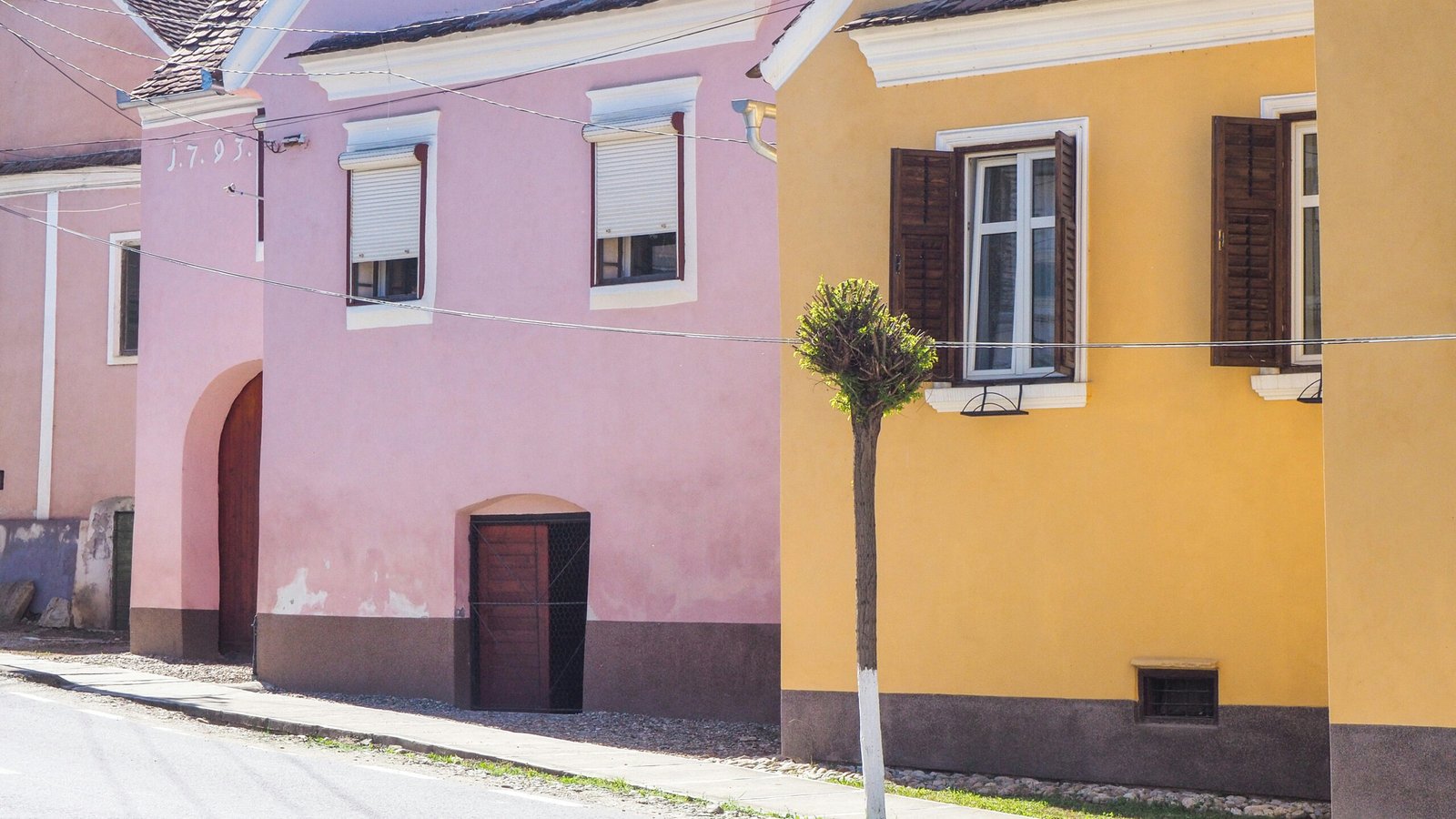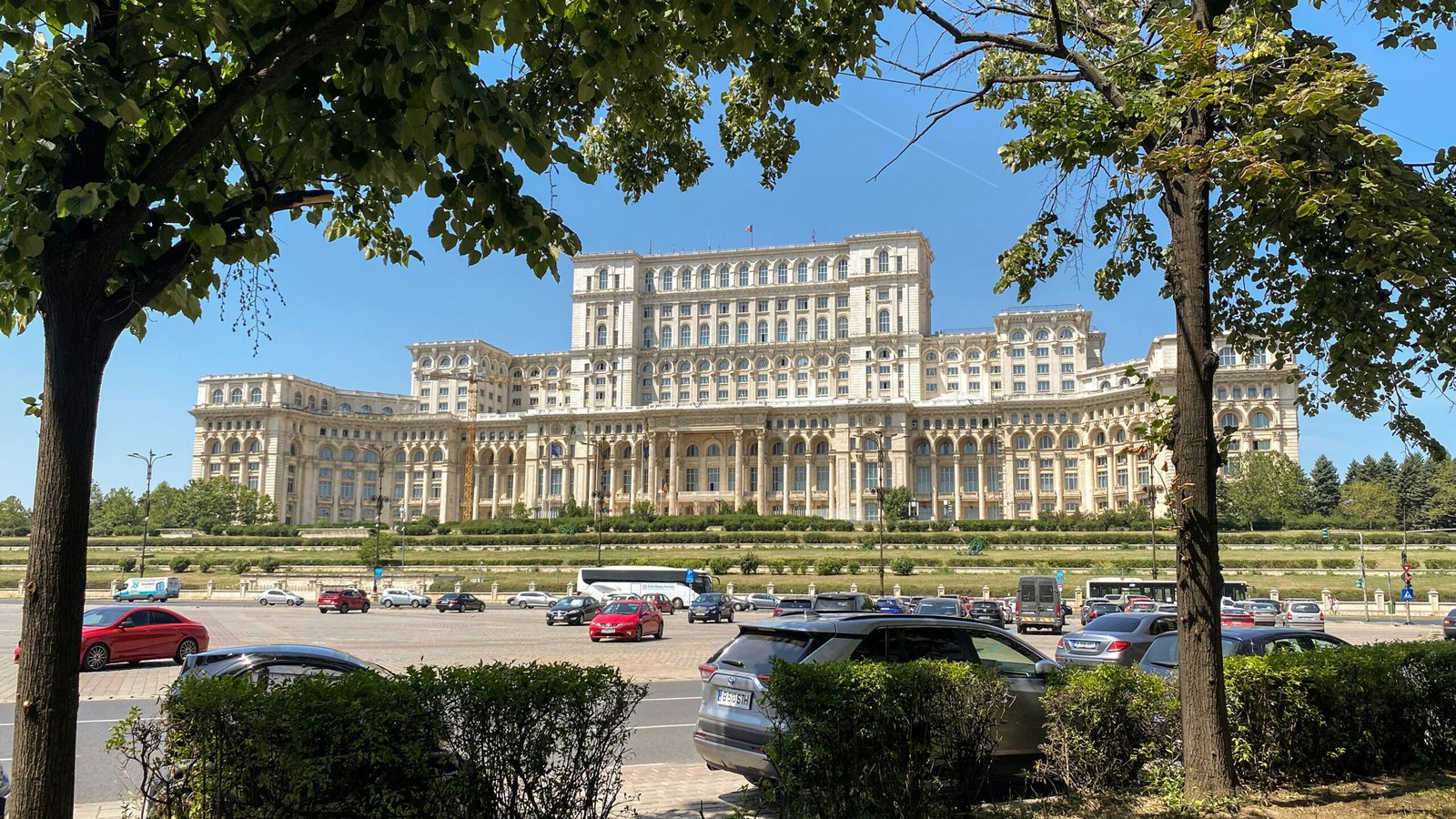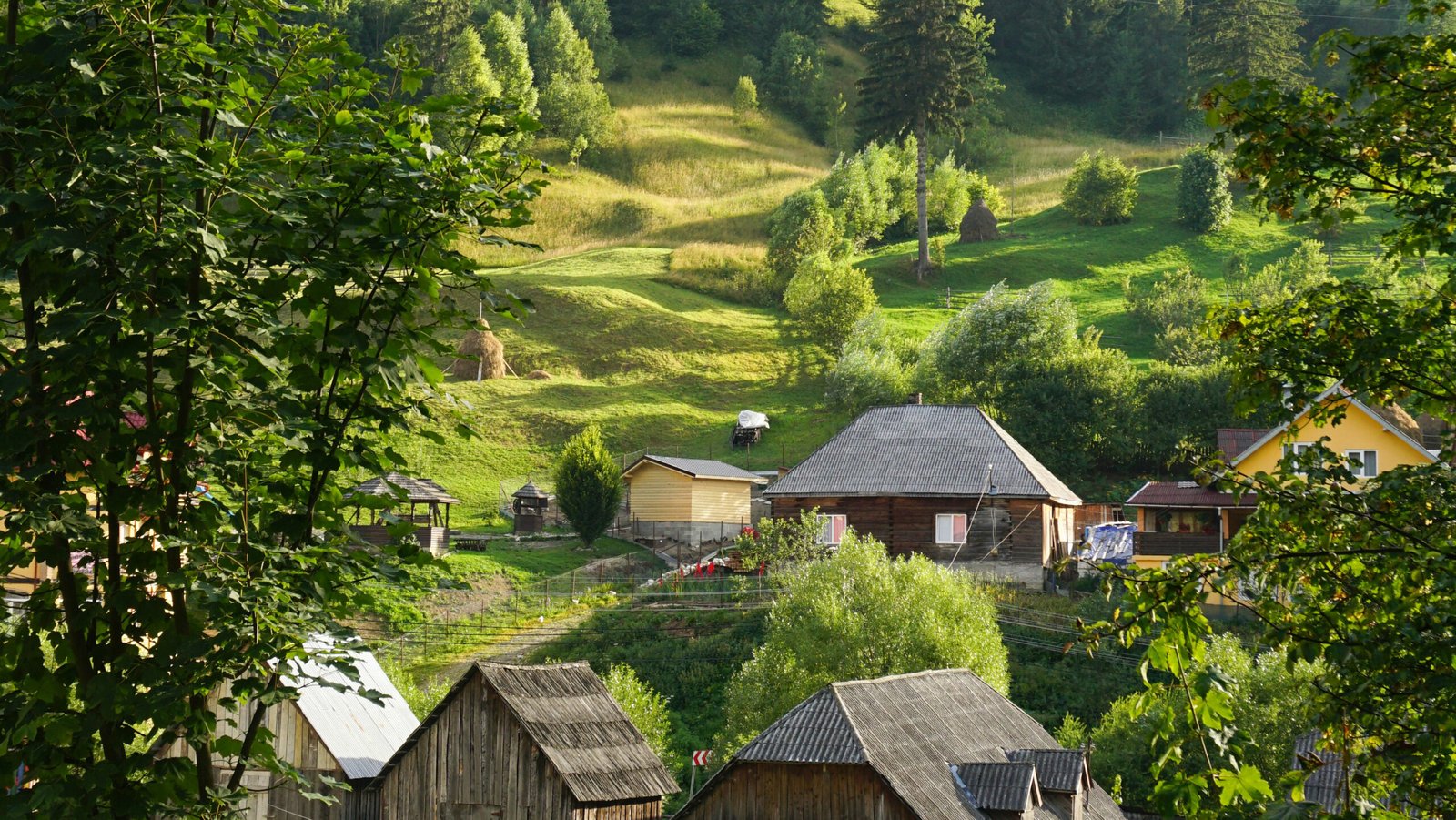
Why Romanian Villages Still Feel Timeless
Step into a Romanian village, and you’ll notice something rare and you’ll likely immediately notice the sense of stillness.
Horse-drawn carts, wooden gates, and hand-stitched blouses aren’t museum pieces here.
They’re everyday life.
Romania’s countryside holds onto traditions that have disappeared elsewhere. In many of these villages, the rhythm hasn’t changed in decades. That’s what makes them worth finding.
Rășinari, Sibiu County
Rășinari is just a short drive from Sibiu, but it feels much older.
Stone alleys curve around pastel houses with red tile roofs. You’ll hear church bells and the occasional cowbell.
This Transylvanian village has deep Orthodox roots and a strong cultural identity.
Poet Octavian Goga was born here, and the locals still speak in hushed, proud tones about him.
Șirnea, Brașov County
Tucked at the base of the Piatra Craiului mountains, Șirnea is Romania’s first “tourist village.” But don’t let that label fool you as it’s peaceful and not at all crowded.
Traditional homes dot the hillside, and fog rolls through the valley each morning.
In summer, villagers gather wildflowers and host small festivals with folk dancing and fresh cheese.

Rimetea, Alba County
With its white-washed houses and green window shutters, Rimetea looks like it was painted into the landscape.
I waited years to finally visit Rimetea, and it was so worth the wait! The village and Ethnographic museum are wonderful, and the views of the mountains is well worth the visit.
Backed by the Piatra Secuiului cliffs, the village is striking in any season.
It was once a Hungarian mining town, and many residents still speak Hungarian. Sunrise here is special because the sun appears to rise twice due to the mountain’s shape.

Mălâncrav, Sibiu County
Mălâncrav sits quietly among apple orchards and rolling hills.
It’s home to one of the few surviving Saxon communities in Romania, though today it welcomes visitors of all kinds.
The 14th-century church features rare Gothic frescoes. The village itself remains simple, with cobblestone paths and wooden barns built before cars ever arrived.
Reb, Maramureș County
Breb feels untouched.
In this corner of northern Romania, village life moves especially slowly.
Locals wear traditional dress without occasion, and carved wooden gates guard each home, showing off the wealth of each family and their ties to the traditional ways of life in the area.
The Orthodox church is a landmark, but it’s the daily scenes like the haystacks, oxen, and quiet paths, that make Breb feel like another era.
Many come and never want to leave.

Viscri, Brașov County
Viscri is more known than most on this list, thanks to Prince Charles, who helped preserve it.
Yet it still feels quiet and real. If you’re lucky, you may be able to witness the cows walk themselves home from the fields after a long day of grazing. Each one knowing exactly when to pull off of the gravel road into their own yards, only to rest and get back out to the fields again the next day.
The Saxon church sits above tidy rows of blue-painted homes.
Evenings are hushed here. You’ll hear chickens scratching, children laughing, and the breeze moving through the fields.
It’s the simplicity that makes this Transylvanian village unforgettable, and Viscri is by far my favorite of the traditional Romanian villages to visit.
Călnic, Alba County
Călnic is dominated by a 13th-century fortress, but the village itself is just as historic.
Winding streets and terraced gardens give it a medieval air.
Once a Saxon stronghold, it’s now a quiet spot where you might hear German mixed with Romanian in daily conversation.
Locals still tend their grapevines by hand, and life moves slowly.

Roșia Montană, Alba County
This former mining village sits in the Apuseni Mountains.
Though its name has stirred debate over the years, Roșia Montană is undeniably rich in history and beauty.
Wooden houses cling to the hills, and mining tunnels stretch back to Roman times.
Many come for the rolling hills that make up the landscape and stay for the quiet resilience of village life.
Gărâna, Caraș-Severin County
High in the Banat Mountains, Gărâna feels like it belongs to another country.
It was once a German village, and traces of that identity remain in the steep roofs and orderly gardens.
The village hosts a famous jazz festival each summer, but the rest of the year is calm. It’s a good place to hike, breathe pine air, and stay in a wooden guesthouse.
Nucșoara, Argeș County
On the edge of the Făgăraș Mountains, Nucșoara is one of the most beautiful villages in Romania.
Tall peaks guard the village like ancient sentinels.
This is where hikers start long treks into the Carpathians. But even if you don’t climb, the village offers slow walks, home-cooked meals, and old-style hospitality.

What Makes Romania’s Villages So Unique
Many of these hidden villages in Romania preserve ways of life that haven’t changed for generations. By far not an exhaustive list, these Romanian villages do, however, give you a sense of why people come to visit, and which ones you should try to add to your itinerary should you want to see something truly unique.
Farming, faith, and family still anchor daily routines, and it’s this attachment to traditions, against the backdrop of a modern world, which is what keeps drawing me back.
In Transylvania especially, you’ll see layers of Romanian, Hungarian, Saxon, and Szekler heritage. This blend gives each village its own rhythm and voice.
How to Explore These Romanian Villages
Reaching these places often requires a car and a sense of patience.
But that’s part of the reward. Roads curve through forests and hills, passing haystacks and sheep.
Accommodations are usually simple and very rewarding. Guesthouses, farm stays, or a room in someone’s home, are the best ways for you to see this part of the country, and its people and traditions.
The warmth of the welcome often matters more than any star rating, and the food, made by hosts or locally in these small villages, will make you really understand what makes Romanian food so amazing.

Final Thoughts: Romania’s Rural Heart Still Beats Strong
The best medieval towns in Romania may draw more headlines, but its hidden villages offer something else.
A slower pace, deep-rooted traditions, and quiet beauty.
If you’re searching for beautiful villages in Romania where life feels authentic and time stretches out, start here.
These ten are only the beginning, and while Bucharest and other larger cities are great to visit, you should try to get out to at least one village during your travels, just so you can see the contrast that makes Romania so interesting to explore.










Leave a Reply